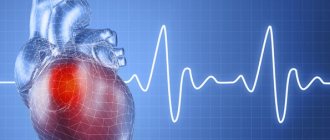general information
Depersonalization is a syndrome. A person perceives his thoughts and feelings as if from the outside. He stops connecting his own personality with the body.
Depersonalization is almost always a symptom of bipolar disorder, depression, or schizophrenia. Often this condition is accompanied by derealization or mental anesthesia.
Pathology is defined in psychology as a subjective feeling. The alienation experienced by a person with depersonalization distinguishes this disorder from the syndrome of mental automatism.
The patient realizes that his condition cannot be called normal. This pathology differs from other disorders.
Not always a pathology
Depersonalization syndrome is not always a pathological mental disorder. Symptoms occur occasionally in more than 70% of people. It seems to a person that for a short time he does not belong to himself.
Usually this condition manifests itself during the formation of a person’s self-awareness. Even when occurring systematically, cases of depersonalization are not considered a pathology. With a stable form of depersonalization-derealization syndrome, it requires prompt medical intervention.
Basic forms
The following forms of this disorder are distinguished:
- Autopsychic depersonalization.
- Somatopsychic depersonalization.
- Allopsychic depersonalization.
- Anesthetic depersonalization.
Features of autopsychic depersonalization
In this condition, patients lose the ability to feel adequately. The paradox is that they experience this painfully.
The loss of emotional responses to insults, the illness of a loved one, or good news contributes to spiritual emptiness. Sometimes the patient deliberately goes into conflict in order to feel at least something, but this is useless.
This depersonalization is often found in the clinical picture of depressive syndromes.
Features of somatopsychic depersonalization
The characteristics of a patient with this disorder are quite specific. A person's perception of physiological and bodily manifestations decreases. There are complaints that parts of the body have “become different.”
Healthy, but very tired people can experience similar conditions to a mild degree.
A person suffering from somatopsychic depersonalization does not experience hunger. But when he sits down to eat, satiety does not come either. He may complain that food has no taste and that eating does not give him pleasure.
The process of defecation seems to the patient to be incompletely completed. He doesn't feel satisfied after that. There is no satisfaction during sex.
Elements of this condition may be present in residual organic brain damage.
Features of allopsychic depersonalization
Depersonalization syndrome is characterized by the presence of subjectively painful experiences. There is also alienation of mental acts relating to personally significant external objects. This applies to ordinary desires, interests, attachments and everything with which a person associates a feeling of security and stability.
Relationships with loved ones suffer. Some patients begin to feel burdened by their home. Parents often become objects of deepest hostility.
The sympathetic attitude of a mother or father is perceived inadequately. The patient feels that his parents are encroaching on his safety and freedom. He moves more and more away from loved ones, withdraws into himself, becomes embittered, and sometimes cruel.
Features of anesthetic depersonalization
This form of the disorder is characterized by a painful feeling of emotional alienation. The patient complains of:
- lack of empathy;
- lifelessness of the surrounding world;
- dullness of taste;
- “numbness” in the head.
This state is also characterized by a lack of attachments and emotional resonance. The mother realizes that she should love her child, but she feels nothing for him.
Anesthetic depersonalization is severe and difficult to treat. Pathology often accompanies schizotypal disorders.
If the clinical picture is dominated by anxiety, the disorder is classified as depersonalization and derealization syndrome.
Kinds
There are several types of this disorder depending on the direction of the feeling of unreality of what is happening.
- Somatic – distortion of the perception of one’s body. Let's say that the arms and legs may seem to be of different sizes, completely asymmetrical, made of iron or wood. It is interesting that the patient himself understands how irrational his feelings are, that this really cannot exist. But at the same time, one leg seems to him to be size 45, and the other looks like a baby’s leg.
- Autopsychic – changes in the perception of one’s own personality, but usually the depersonalization is not able to indicate which ones.
- Anesthetic – decreased response to pain. That is, if a person has suffered for a long time at the level of physical sensations, then at one point they will significantly decrease without taking painkillers.
- Allopsychic - resembles a split personality, when it seems that several people with different characters fit into one body.
Why is it developing?
It is believed that specific signs appear more often in young women who have crossed the thirty-year barrier. Cases of diagnosing this pathology in adolescence have become more frequent.
The reasons why depersonalization occurs are quite varied.
This disorder is almost always associated with repetitive stressful situations. The human psyche begins to resist, his attention switches to the view “from the outside.” This helps reduce emotional stress.
The patient does not lose the ability to reason logically. Sensory perception of the world becomes dull, a person begins to reflect.
Main provoking factors
Derealization and depersonalization appear against the background of:
- Disorders of the pituitary gland.
- Epilepsy.
- Schizophrenia.
- Presence of a tumor in the brain.
- Alcohol abuse.
- The use of drugs that influence the psyche.
- Impaired functioning of the adrenal glands.
Depersonalization is often diagnosed in neurosis. Specific symptoms occur in people with obsessive-compulsive disorder.
Predisposing factors
Symptoms of derealization and depersonalization occur due to:
- Neurological diseases.
- Vegetative vascular dystonia.
- Frequent fainting.
- Regular increase in blood pressure.
Characteristics of depersonalization
Depersonalization syndrome can occur against the background of severe stress or mental stress. In this case, it does not pose a danger, since it is the body’s defense. If the syndrome does not drag on for a long time, then the person and those around him have nothing to fear. Otherwise, the patient becomes dangerous to himself and society. Depersonalization, which lasts for a long time, leads to a pathological psycho-emotional state, which often ends in suicide. To avoid this, you need to consult a specialist and undergo a course of medication.
Depersonalization syndrome can occur due to severe stress
Quite often this pathology occurs with the following serious mental disorders:
- manic-depressive psychosis or bipolar disorder;
- epilepsy;
- schizophrenia;
- depression;
- endocrine diseases;
- pathologies of the central nervous system of an organic nature;
- affective mental disorders;
- neoplasms in the brain.
This syndrome can be observed with neurosis, panic attack or phobia. Often the cause is psychosis caused by taking drugs, medications or large doses of alcohol.
There is no need to confuse the episodic manifestation of the syndrome and a constant state of alienation. Doctors say that such protection of the psyche from severe stress is characteristic of more than half of people. A person's sensory and emotional sensitivity is significantly reduced, colors become paler, and sounds become muffled.
One of the causes of the disease is neoplasms in the brain
How it manifests itself
The presence of a violation of adequate physical perception of the surrounding reality is indicated by the following signs:
- dulling of pain;
- decreased perception of cold and heat;
- lack of taste sensations.
Sounds seem unclear to a person. Telling the doctor about his feelings, he says that he feels as if he is “underwater.” Objects do not have clear boundaries and look blurry. The colors fade and turn gray. Against this background, color blindness sometimes develops.
Symptoms of VSD
Depersonalization with VSD manifests itself:
- lack of oxygen;
- increased temperature;
- depressed mood;
- frequent dizziness;
- migraines.
Dystonia is combined with chronic fatigue and weakness. A person may complain of mild pain in the lower extremities. Many patients become weather dependent.
Difference from mental pathologies
It is not difficult to understand that a person does not suffer from severe mental disorders, but is only in dereal.
The attacks are not accompanied by hallucinations. To one degree or another, a person can control his behavior. The world around him seems unreal to the patient, but he defines it correctly. He realizes that something is wrong with him. A mentally ill person does not understand this.
Symptoms of derealization and depersonalization
We already know that in modern society the problem we are studying most often arises. Being mentally exhausted, people become inadequate, nervous, aggressive, they lose touch with reality. But do all mentally exhausted people suffer from psychosensory perception disorder? To do this, you need to establish the following symptoms:
- the colors of the surrounding world fade, the entire color scheme changes;
- sound effects are distorted, muffled, as if distant;
- a familiar place becomes unfamiliar, new;
- a person perceives time incorrectly;
- a phenomenon called “déjà vu” is observed;
- visual effects lose their clarity and become blurry.
Symptoms of depersonalization
In this case, a person ceases to perceive his own body, his “I”. It's like in a movie, the hero looks at his arms and legs, and they seem alien. But even looking at his reflection in the mirror, he does not understand who is looking at him, where he is - on this side or that side of the mirror.
And the voice he speaks with seems to come from someone else, from the void. Psychiatrists say that the condition can worsen to such an extent that upon entering a room with people, a person thinks that he is not there. That is, there is a complete separation of consciousness and body, but it is also quite natural that he considers himself crazy.
Why are people afraid of these conditions?
It’s simple, which of us would be pleased to go outside, go to bars, communicate with people and understand that you do not exist now, you are outside of reality. This state of affairs has a very negative impact on the quality of life. It's hard to find friends, continue contacts, fulfill your obligations, and just live. Moreover, such symptoms cannot but frighten a person. We understand that in such situations, it is completely natural to believe that there are serious mental problems, that you are going crazy.
Clarifying the diagnosis
The doctor begins to treat depersonalization only after establishing an accurate diagnosis. The diazepam Nuller test helps differentiate between this disorder, depression and anxiety.
For this, the patient is given 20 to 30 mg. Diazepam solution. The doctor expects 3 reactions:
- anxious;
- depressed;
- depersonalization.
With an alarming reaction, affective symptoms quickly disappear. They give way to euphoria. With a depressive reaction, the symptoms do not change. The patient quickly falls asleep. With a depersonalization reaction, a positive effect occurs for 20 minutes. Pathology can be reduced completely or partially.
How you can help
Treatment for depersonalization depends on the severity of symptoms. If the signs have not been present for long, the patient is referred for psychoanalysis. Additional therapeutic methods include:
- Use of antidepressants.
- Passage of massage procedures.
- Acupuncture.
- Undergoing physiotherapeutic procedures.
Treatment in hospital
If depersonalization only worsens, then treatment is carried out in a hospital. The complex of therapeutic measures comes down to the destruction of the sources of fear that provokes the “disconnection” of the individual.
In especially severe cases, the patient is prescribed the use of potent sedatives, antipsychotics, tranquilizers and neurotropic medications.
Psychological help
The patient will be told how to get rid of depersonalization during psychotherapy sessions. If he has no history of other pathologies, treatment is aimed specifically at this disorder.
The lesson begins with an explanation of the nature of the pathology. The specialist also talks about ways to combat it. The prescribed psychological techniques consist of switching the patient’s attention from his experiences to the world around him.
The doctor undertakes to teach the patient ways of harmonious interaction with the surrounding reality. The most effective therapeutic methods include:
- motivating technique of suggestion;
- auto-training;
- hypnosis.
This reduces the intensity of symptoms. Upon completion of the course of psychotherapeutic treatment, the disorders are eliminated and the patient’s condition is stabilized.
Drug therapy
Drug therapy helps to get rid of the symptoms of the pathology. The patient is prescribed medications such as:
- Quetiapine.
- Amitriptyline.
- Clopyramine.
- Sonapax.
These medications are taken simultaneously with vitamin C. If the disorder is combined with depression, the use of nootropics with an antioxidant effect is prescribed. The best medicines are Cytoflamin and Cavinton.
In order to normalize the functioning of the opioid function of the brain, the use of Naloxone and Naltrexone is prescribed. To relieve anxiety and panic, it is recommended to take Seroquelem and Anafranil. Impaired functioning of the adrenal glands can be eliminated with the help of Decorten.
The use of serotonin reuptake inhibitors is also prescribed.
Self-help methods
Everyone should know how to get rid of an attack of depersonalization on their own. This can help quickly relieve symptoms at home, without the use of medications.
You need to relax as much as possible, try to breathe more evenly and calmly. Then you need to concentrate on the thought that this is a temporary state. It is successfully treated and the symptoms will soon disappear.
The patient's attention should be concentrated on some phenomenon or object. It is not necessary to look at every detail. Then you need to try to concentrate your attention on neutral thoughts.
Treatment
Treatment should begin at the first sign of manifestation. Since at the initial stage it is quite possible to get rid of this disease.
If you start it, there is a high probability that it will remain forever. And you will just have to periodically undergo a course of treatment in order to be able to lead your usual active social life.
If the condition is aggravated by other types of mental illnesses, then an individual medication course is directly selected. In some cases, hospitalization is necessary.
But basically, working with a psychotherapist is enough. Moreover, if the condition is not severe for the prescription of medications.
Typically, during therapy, methods are used that allow one to resolve the internal conflict that led to depersonalization.
The psychologist also helps to discover ways to deal with stress that will really work for the patient.
After all, if one person can calm down only by mentally counting to ten, then even active training will not save another from unnecessary stress.
In general, this diagnosis is not considered to be fully studied; specialists around the world have only recently paid attention to it and have not yet invented effective treatment methods.
In the United States, antidepressants are mainly used to reduce anxiety and return the psyche to a state of awareness.
In Russia, the patient is most often examined, trying to discover the main cause of the occurrence, and only then are they selected methods that will help him recover and regain control over his body.











